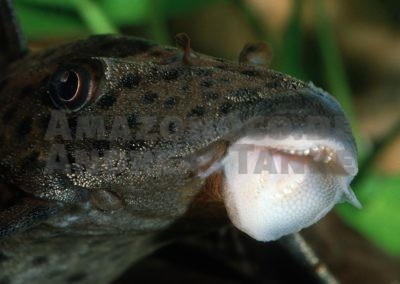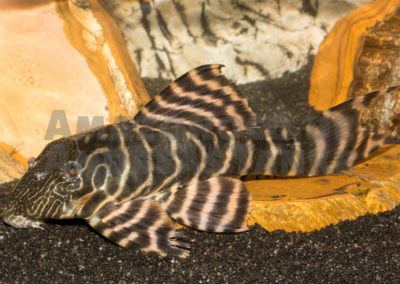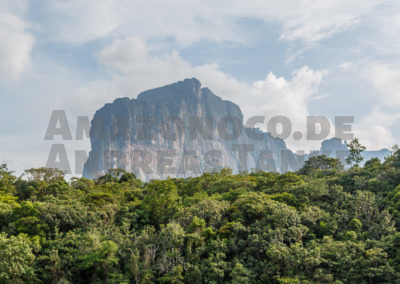
by Andreas Tanke | 18. 06. 2018
Corydoras in theory and practice
In this talk, I will introduce the popular armored catfish of the genus Corydoras. Starting with a general introduction to Corydorinae, followed by a little bit of theory about the lineages, C and CW numbers before going on to the presentation of different biotopes where I could already caught Corydoras.
Then I’ll give some information about keeping and breeding of these catfishes and also give an overview of different species that I could find in recent years in the trade.
Origin of Corydoras benattii (C 22) at Rio Xingu
Small creek in tributary of the Marshalcreek, Suriname. Origin of Corydoras aeneus
Corydoras sp. aff. “CW028”

by Andreas Tanke | 18. 06. 2018
Introduction and breeding report of Panaqolus claustellifer (L 306)
In this talk I‘ll present a very nice and small pleco: Panaqolus claustellifer (L 306). That species comes from the most northern area of Brazil in Roraima state. I have found Panaqolus claustellifer (L 306) in their naturals habitats, but at home in my tanks.
In this talk I will give information about the origins of these pretty Panaqolus, by presenting photos and data of some biotope. But I will give also hints and information how I was able to spawn and breed them.
This talk can also be combined with other short talks to an evening event.
Panaqolus claustellifer L 306
Juvenile Panaqolus claustellifer L 306
Panaqolus claustellifer (L 306)
Panaqolus claustellifer (L 306)
Larvae of Panaqolus claustellifer L 306
Juvenile Panaqolus claustellifer L 306
Juvenile Panaqolus claustellifer L 306
Juvenile Panaqolus claustellifer L 306

by Andreas Tanke | 18. 06. 2018
Wood Eaters – the loricariids of the genera Panaqolus, Panaque and Cochliodon
Just from the beginning I was fascinated by wood eating plecos. Next to my favorite genus Panaqolus there are with Panaque and Cochliodon two more genera with that uncommon behavior. I‘ll present in this talk not only general information about this behavior, but also introduce the biotopes where these catfishes live. Furthermore I’ll report about their way of life, their sexual dimorphisms and some breeding successes of these genera…
Panaque cochliodon (Photo: Ingo Seidel)
Panaqolus claustellifer (L 306)
Egg clumb (Photo: Ingo Seidel)
Río Ucayali, Peru (Photo: Ingo Seidel)
Río San Alejandro, Peru (Photo: Ingo Seidel)
Panaque cf. armbrusteri (L 027), Rio Xingu (Photo: Ingo Seidel)
Panaqolus sp. (L 482), Rio Ipixuna
Cochliodon sp. (L 145) (Photo: Ingo Seidel)

by Andreas Tanke | 18. 06. 2018
Venezuela – traveling with JBL and aquarists
In 2016, I got the honor to accompany a tour group to Venezuela by an invitation from JBL. Due to the good preparation and planning, we were able to travel the country very safely despite the politically difficult situation. The journey consisted of two parts. The first part took us to the estuarine delta of the Orinoco, where we spent a few days in an ecolodge and explored various biotopes there. For the second part were going by small planes (4-6 seats) to Canaima with the aim to visit the Salto Ángel (highest waterfall in the world).
In this talk, I report on this trip and give insights into the flora and fauna we traveled.
Indian stands in the Ecolodge
Expeditions in Orinocodelta
Green Iguana, Iguana iguana iguana (Linneaus, 1785)
Canaima Lagoon with the Saltos Wadaimo, Golondrina and Ucrima
Canaima lagoon with the Saltos Wadaimo, Golondrina and Ucrima
Crenicichla aff. saxatilis „Caroni“

by Andreas Tanke | 18. 06. 2018
Biotopes of plecos at Rio Xingu
The Rio Xingu is one of the most important tributaries of the amazon in Brazil. I‘ll present different types of biotopes of the Rio Xingu and their inhabitants. The start is at the mouth of the Rio Xingu near Porto do Moz and ends at São Félix do Xingu. The main aspect will be the big bend – the Volta Grande. But also the Rio Iriri will not be skipped. At the end I‘ll give a foresight of the future of the Rio Xingu. That might be very bad, because of the hydroelectric dam and the exploitation of mineral resources!
Stromschnellen in der Volta Grande
Oligancistrus zuanoni (L 20)
Scobinancistrus aureatus (L 14)
Tiefe Areale in der Volta Grande
Biotope in der Volta Grande
Niedrige Wasser in der Volta Grande


































































